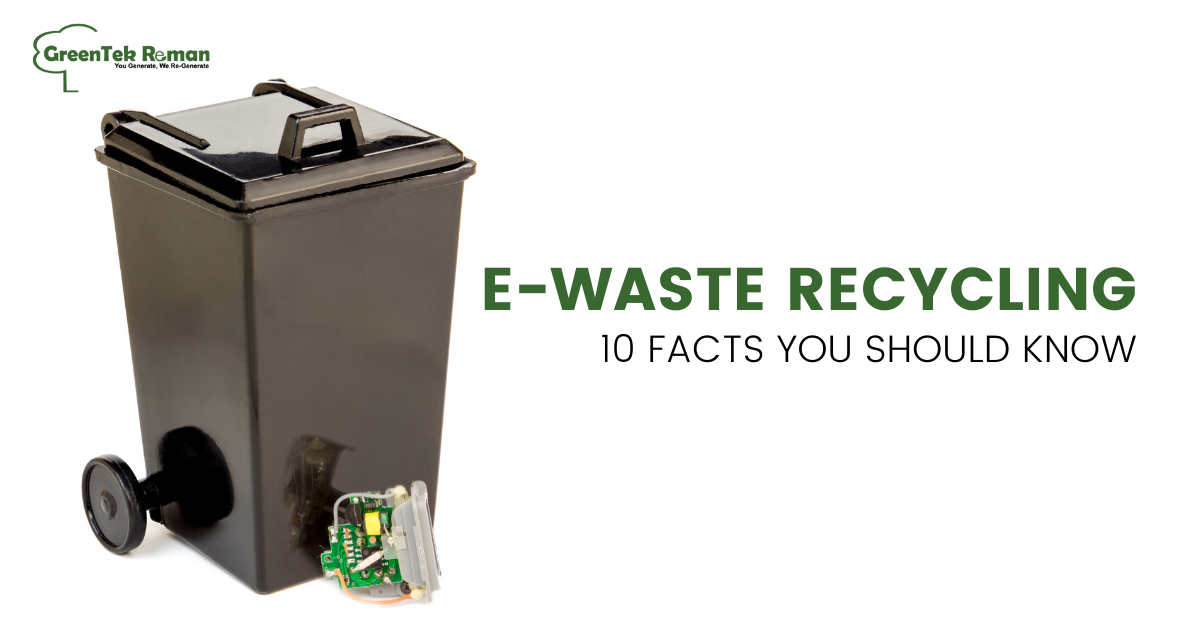10 Facts You Must Know About E-waste Recycling
E-waste recycling, as it suggests, is the recycling and reuse of e-waste. E-waste or electronic waste includes electronic products such as obsolete laptops, old telephones, fax machines, dead mice, miles of cables, and lonely monitors that are nearing (or exceeding) the end of their useful life.
For decades, device replacements have escalated dramatically due to built-in obsolescence and the belief that replacement is sometimes cheaper than repair. At the enterprise level, the issue comes when a device reaches the end of its rental period.
Two significant problems are the drastic increase in mining material for production and the dramatic increase in electronic waste due to discarded devices.
The solution to dealing with idle electronics is a growing problem across the world. It can be in corporate offices with phones on every desk and workstations that are updated annually; some are a nightmare that can be easily ignored until you aren’t. Old technology creates space and storage problems, data security, and environmental damage.
However, a growing number of companies that specialize in e-waste recycling have become certified to dispose of these devices correctly and provide much-needed service across all industries.
Here are ten helpful e-waste recycling facts to help you figure out how and why to recycle.
1. E-waste is poisonous.
E-waste carries dangerous additives like mercury, lead, cadmium, polybrominated flame retardants, barium, lithium, and polyvinyl chloride. If not properly recycled, these risky substances can contaminate groundwater.
2. Most e-waste finally ends up in landfills and incinerators.
Globally, we generate around 40 million tons of electronic waste every year. Equivalent to throwing 800 laptops every second! And 85% of our e-waste is sent to landfills and incinerators. E-waste burned releases harmful toxins in the air.
3. E-waste accounts for 70% of poisonous waste.
70% of all toxic waste comprises e-waste, and e-waste is the most significant growing waste globally.
4. E-waste can create protection issues.
Whether on a hard drive, flash drive, flash drive, SIM card – or in some other form – maximum electronics keep a few non-public records. For cybercriminals, these records become a goldmine of capability value. The annual report from IBM Security and the Ponemon Institute, the global average total cost of a data breach in 2020 was $3.86 million.
5. Some of the electronic waste is reusable.
Especially at the enterprise level, a device can be at the end of its useful life for your company, but it can be helpful for someone else. This is an important opportunity in a product’s life cycle. If you can reuse an item, you save space in a landfill, and no new resources are used on a newly manufactured product. High-quality, certified e-waste recyclers identify items that are eligible for restoration and resale.
6. Electronic waste is practically 100% recyclable.
The devices are dismantled into their individual parts and processed into raw materials for new products. Non-renewable materials like lead, cadmium, mercury, lithium, manganese, nickel, and zinc can be recycled an infinite number of times, and they have real commercial value. Glass, copper, plastics, metals, and precious metals are sent for further processing for possible reuse.
Manufacturers can extract lithium from old phones and convert the batteries into new ones. The printer toner can be used as an additive on recycled road surfaces, and the ink can be reused as 100% recycled ink. These are just a few examples. Many other opportunities are just waiting to be explored, when talking about e-waste recycling.
7. E-waste recycling creates jobs.
It is estimated that 296 new jobs are created for every 10,000 tons of computer scrap processed each year. The e-waste recycling industry is growing and creating hundreds of thousands of new jobs worldwide.
8. Electronic waste contains precious metals.
For example, for every million cell phones recycled, 35,000 pounds of copper, 772 pounds of silver, 75 pounds of gold, and 33 pounds of palladium can be recovered.
9. Electronics manufacturers and retailers are starting to offer more.
In 2018, Apple introduced Daisy, a robot that can separate 200 recycled cellphones per hour, or 1.2 million per year. Daisy itself was created with recycled parts from “Liam,” her predecessor robot. Retailers like Best Buy, HP, and Verizon accept electronics for recycling no matter where you bought them.
10. Recycling e-waste can be easy, even at the corporate level.
GreenTek Reman can make e-waste recycling for you and your company easy – whether it is two people or 20,000 – we make e-waste recycling as easy as recycling paper. And when you work with a certified e-waste management services provider like GreenTek Reman, you can be confident that they will adhere to the highest global legal and ethical standards.


